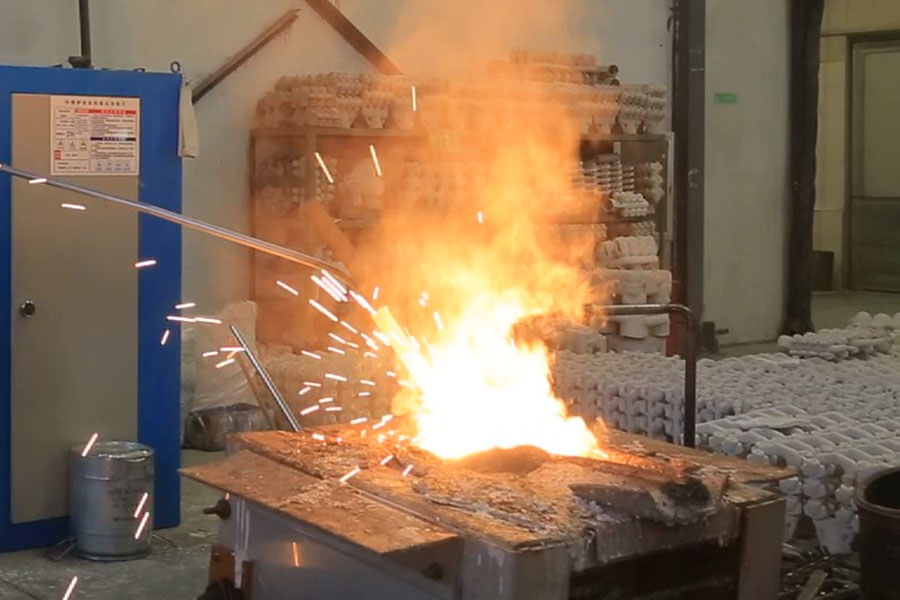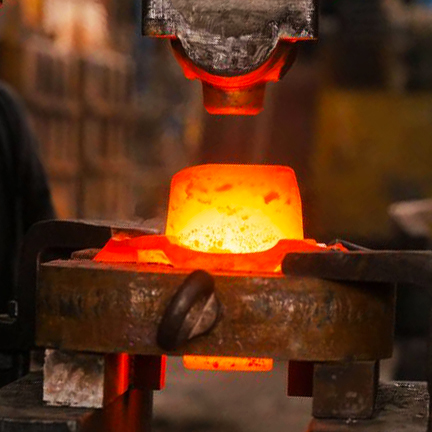There are a variety of manufacturing processes to produce a custom metal part. Each has its own set of advantages and disadvantages. Some of the important factors affecting the selection of a process include the following:
- Quantity of the material required
- Design of the metal part
- Required Tolerances
- Metal specification
- Surface finish required
- Tooling costs
- Economics of machining versus process costs
- Delivery requirements
Casting
The casting process consists of pouring or injecting molten metal into a mold containing a cavity with the desired shape of the castings. Metal casting processes can be classified either by the type of mold or by the pressure used to fill the mold with liquid metal. If by the type of mold, the casting process could be classified into sand casting, investment casting and metal die casting; while if by the pressure used to fill the mould, the casting process could be divided into gravity casting, low pressure casting and high pressure casting.
Fundamentals of Casting
Casting is a solidification process. Therefore, the microstructure can be finely tuned, such as grain structure, phase transformations and precipitation. However, defects such as shrinkage porosity, cracks and segregation are also intimately linked to solidification. These defects can lead to lower mechanical properties. A subsequent heat treatment is often required to reduce residual stresses and optimize mechanical properties.
Advantages of Casting:
- Large and complex metal casting products are easy.
- High production rate, sepecially by automatic moulding line.
- Design flexibility is available and more suitable.
- Diverse metal available: grey iron, ductile iron, carbon steel, alloy steel, stainless steel, aluminium alloy, brass, bronze and zinc alloy.
Disadvantages of Casting:
- Defects inside the castings
- Shrinkage porosity
- Metallic projections
- Cracks, hot tearing, cold shuts
- Laps, oxides
- Misruns, insufficient volume
- Inclusions
- Requires close process control and inspections (porosity may occur)
Forging
Forging is a manufacturing process where metal is shaped by plastic deformation under great pressure into high strength parts. According to if the forging mould is used, the forging process is invided into open die forging and close die forging. But if by the temperature of the forged metal and alloy before forging, the forging process could be divided into cold forging, warm forging and hot forging.
Fundamentals of Forging
Forging or cold forming are metalforming processes. There is no melting and consequent solidification involved. Plastic deformation produces an increase in the number of dislocations resulting in a higher state of internal stress. Indeed, strain hardening is attributed to the interaction of dislocations with other dislocations and other barriers (such as grain boundaries). Simultaneously, the shape of primary crystals (dendrites) changes after plastic working of the metal.
Advantages of Forging:
- Good Mechanical properties (yield strength, ductility, toughness)
- Reliability (used for critical parts)
- No liquid metal treatment
Disadvantages of Forging:
- Die unfill
- Die failure
- Shape limited when undercuts or cored sections are required
- Overall cost usually higher than casting
- Multiple steps often required
We may distinguish hot working from cold working. Hot working is performed above the recrystallization temperature; cold-working is performed below it. In hot working strain hardening and distorted grain structure are very rapidly eliminated by the formation of new strain-free grains as the result of recrystallization. Rapid diffusion at hot working temperatures aids in homogenizing the preform. Initial porosity can also be significantly reduced, eventually completely healed. Metallurgical phenomena such as strain hardening and recrystallization are important because these changes in structure result in an increase in ductility and toughness over the cast state.
An important thing to keep in mind is that quality of materials and heat treating may be a more important factor than the difference between casting and forging in some cases.


Post time: Feb-24-2021

